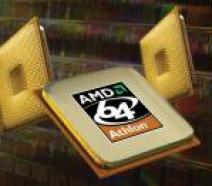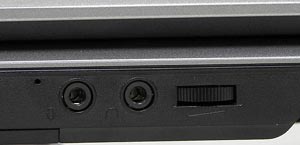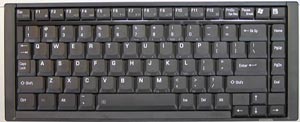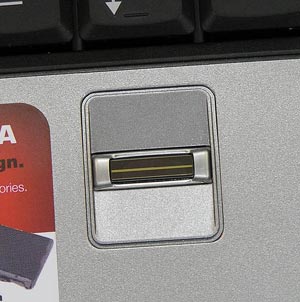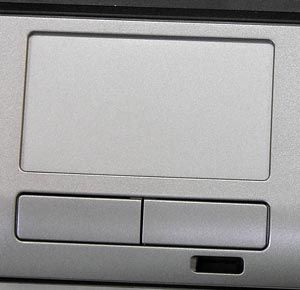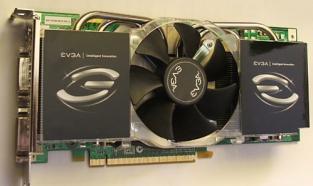TOSHIBA TECRA A6-S513 REVIEW NOTEBOOK PERFORMANCE BENCHMARK
![]()
|
|
 |
||||||||||||
| Posted:2006-06-09 By notebook review Number of View:416673 |
|||||||||||||
By :notebook review Posted:2006-06-09
Toshiba’s new Tecra A6-S513 is the last to be reviewed here.
Notebooks from Toshiba feature a very recognizable design, so you can guess the manufacturer without the prompting stickers. This consistency through generations is valuable for loyal fans of the brand that won’t be left without their favorite features after replacing their current notebook. Like the notebook from Sony (see the previous section), this model offers but few interface connectors which are also not very conveniently placed around its case.
The intricately shaped front panel which is the result of the original relief of the notebook’s bottom (they even had to attach feet to it to make the computer steady) carries a Wi-Fi switch on the left…
…and headphones and microphone sockets with a volume control on the right:
Toshiba is not afraid of using such controls because their service time depends directly on the quality of the potentiometers and the company’s engineers have proved their quality in the numerous sold notebooks. The notebook status indicators are located in the bottom left corner:
They are well visible even when the lid is closed. The back panel carries a power adapter connector, one USB port, and LAN and modem ports.
I can put up with the latter two, but I can’t understand why you would ever need a USB port at the back of your computer. The power adapter connector is rather too far from the edge, so you have to get used to it to learn to attach the adapter blindly. The rest is ordinary enough. The right panel accommodates an optical drive and two USB connectors:
On the left panel, there is an external monitor output, one more USB port, S-Video output, FireWire port, PCMCIA slot, and card-reader. This keyboard should be familiar to all users of Toshiba notebooks:
The layout is classic except that the Window and Context Menu keys are in the top row – if you are used to keyboard shortcuts involving these keys, you have to learn them anew. There are only two additional buttons here:
And one button of these two is responsible for switching between the displays which is not a very frequent action. A fingerprint scanner is available:
So, the notebook is up to the latest trends in notebook-making. The touchpad looks like the one of the Sony notebook.
The same minimalism and functionality, but the cursor positioning accuracy seems a little worse to me. The display is average. Its maximum brightness is not very high; its anti-glare coating is too “grainy”; its viewing angles are narrow and color reproduction is average. This display would suit an ordinary low-end product better than to a midrange business notebook. There are a lot of individual compartments here, so it’s not a problem to replace a component like memory or wireless adapter. The battery is nearly standard:
It’s a little below average in capacity, and you’ll see in the Tests section how it tells on the notebook’s battery life. The Tecra A6-S513 is a kind of entry-level business-class notebook. With the configuration it has, it is not a low-end product, but it is not a normal business notebook, either. The most disturbing fact is its price. I doubt this model can make anyone interested when it costs the same or even bigger money than most other models in this review. PerformanceFirst I checked the notebooks in Business Winstone 2004 and Content Creation Winstone 2004 benchmarks Toshiba Tecra A6-S513 winstone benchmarkAnd here are the results produced by PCMark04: Toshiba Tecra A6-S513 pcmark performanceThe results of the Photoshop CS are indicative of the overall performance of the CPU, platform and hard drive: Toshiba Tecra A6-S513 adobe photoshopThe well-balanced LW40 is almost as fast as the two notebooks on the new platform. Other notebooks are slower. The two slowest models shouldn’t be used to run such applications at all – they are only capable of performing office tasks like processing text and spreadsheets, browsing the Web, etc. The next test shows what you can expect from these notebooks in gaming applications: Toshiba Tecra A6-S513 gaming benchmarkperformed this test using the maximum display resolution of each notebook, except for the LG T1 (I used 1280x800 with it because 1440x900 would have been too much for its integrated graphics core). The Acer TravelMate 3222WXMi is the best and can cope with modern games if you don’t use the highest graphics quality settings. Among other notebooks, only models with the X600 are interesting. The Samsung X11 is second after the TravelMate 3222WXMi but I doubt it’s going to be that fast in real games. I also published the results of the CPU subtest to show you that 3DMark03 favors the Centrino Core Duo platform. This is indicated by the Samsung X11’s results. This platform is the most promising one when it comes to games, considering that all the leading game developers have confirmed support for dual-core processors in their upcoming products. And now, the results of the most important test: I put the results the notebooks achieved in Reader’s mode and under maximum load into one diagram because the difference between the two is indicative of how well the manufacturer set up the power-saving parameters. The Sony VGN-FJ1SR looks best here as it yields you its full computing power under max load but is very economical in Reader’s mode. Besides the Sony, there are two more leaders: LG’s T1 with a high-capacity battery and an L series Core Duo processor which features low power consumption, and ASUS W3H00V. The latter proved to be a bit of a cheater, though. Even under max load with the portable/laptop power management scheme selected this notebook never increased its CPU frequency higher than 1.3GHz. It’s all clear with the first two diagrams, but then there are some things I’d want to single out. The LW40 is very fast in the memory test; it’s the best Centrino-based notebook I’ve seen in this benchmark. The Acer TravelMate 3222WXMi is unrivalled in the graphics subsystem test just because it has the fastest graphics adapter among the tested notebooks. Nvidia’s GeForce Go 7400 is downright disappointing. If you need fast graphics, buy a notebook that has dedicated graphics memory. Graphics subsystems of other kind (with such suffixes as TC, HM) are not much better than integrated graphics and cannot ensure high performance in 3D. In the disk subsystem test the notebooks rank up according to the spindle rotation speed of the hard drive they use. Other related notebook: Acer TravelMate 3222WXMi notebook review
we would be happy to answer for your question . if you have suggestion or comment
regarding this review our support would be glad to help just join our forum and ask u will get the best answer
to discuss check our forum section :-) RATE THIS REVIEW | |||||||||||||
![]()

Toshiba Tecra A6-S513 review notebook performance benchmark
Toshiba Tecra A6-S513 review notebook performance benchmark


7600gt review
7600gt is the middle card range.
We already benchmarked this video card and found that ...

 geforce 8800gtx and 8800gts
geforce 8800gtx and 8800gts  Xtreview software download Section
Xtreview software download Section  AMD TURION 64 X2 REVIEW
AMD TURION 64 X2 REVIEW  INTEL PENTIUM D 920 , INTEL PENTIUM D 930
INTEL PENTIUM D 920 , INTEL PENTIUM D 930  6800XT REVIEW
6800XT REVIEW  computer hardware REVIEW
computer hardware REVIEW  INTEL CONROE CORE DUO 2 REVIEW VS AMD AM2
INTEL CONROE CORE DUO 2 REVIEW VS AMD AM2  INTEL PENTIUM D 805 INTEL D805
INTEL PENTIUM D 805 INTEL D805  Free desktop wallpaper
Free desktop wallpaper  online fighting game
online fighting game  Xtreview price comparison center
Xtreview price comparison center 

- The new version of GPU-Z finally kills the belief in the miracle of Vega transformation
- The motherboard manufacturer confirms the characteristics of the processors Coffee Lake
- We are looking for copper coolers on NVIDIA Volta computing accelerators
- Unofficially about Intels plans to release 300-series chipset
- The Japanese representation of AMD offered monetary compensation to the first buyers of Ryzen Threadripper
- This year will not be released more than 45 million motherboards
- TSMC denies the presentation of charges from the antimonopoly authorities
- Radeon RX Vega 64 at frequencies 1802-1000 MHz updated the record GPUPI 1B
- AMD itself would like to believe that mobile processors Ryzen have already been released
- AMD Vega 20 will find application in accelerating computations
- Pre-orders for new iPhone start next week
- Radeon RX Vega 57, 58 and 59: the wonders of transformation
- ASML starts commercial delivery of EUV-scanners
- The older Skylake processors with a free multiplier are removed from production
- Meizu will release Android-smartphone based on Helio P40
- AMD Bristol Ridge processors are also available in American retail
- The fate of Toshiba Memory can be solved to the next environment
- duo GeForce GTX 1080 Ti in GPUPI 1B at frequencies of 2480-10320 MHz
- New Kentsfield overclocking record up to 5204 MHz
- Lenovo released Android-smartphone K8



computer news computer parts review Old Forum Downloads New Forum Login Join Articles terms Hardware blog Sitemap Get Freebies
